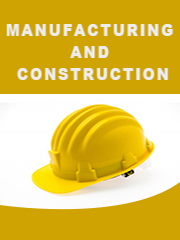Report overview
Non-Woven Manufacturing Machine refers to the equipment responsible for the main production process in the non-woven production process, which is a whole production line facility.The Non-Woven Manufacturing Machine industry can be broken down into several segments, Spunbond Machines, Meltblown Machines, Spunlace Machines, Needle Looms Machines, Hot Air Through Machines, Others, etc.
This report aims to provide a comprehensive presentation of the global market for Non-Woven Manufacturing Machine, with both quantitative and qualitative analysis, to help readers develop business/growth strategies, assess the market competitive situation, analyze their position in the current marketplace, and make informed business decisions regarding Non-Woven Manufacturing Machine. This report contains market size and forecasts of Non-Woven Manufacturing Machine in global, including the following market information:
Global Non-Woven Manufacturing Machine Market Revenue, 2018-2023, 2024-2029, ($ millions)
Global Non-Woven Manufacturing Machine Market Sales, 2018-2023, 2024-2029, (Unit)
Global top five Non-Woven Manufacturing Machine companies in 2022 (%)
The global Non-Woven Manufacturing Machine market was valued at US$ 2344.6 million in 2022 and is projected to reach US$ 4402.2 million by 2029, at a CAGR of 9.4% during the forecast period. The influence of COVID-19 and the Russia-Ukraine War were considered while estimating market sizes.
Global top 5 players of Non-Woven Manufacturing Machine hold 46% of the market, including Reifenh?user, Truetzschler, Oerlikon, Andritz, DILO, etc. Asia-Pacific is the largest market of Non-Woven Manufacturing Machine, holding a share over 50%. Then North America takes over 25%. In terms of type, Spunbond Machines shares over 40% of the market, while Meltblown Machines share 22%. In terms of application, Medical and Hygiene shares the largest percent of nearly 61%.
We surveyed the Non-Woven Manufacturing Machine manufacturers, suppliers, distributors and industry experts on this industry, involving the sales, revenue, demand, price change, product type, recent development and plan, industry trends, drivers, challenges, obstacles, and potential risks.
Total Market by Segment:
Global Non-Woven Manufacturing Machine Market, by Type, 2018-2023, 2024-2029 ($ Millions) & (Unit)
Global Non-Woven Manufacturing Machine Market Segment Percentages, by Type, 2022 (%)
Spunbond Machines
Meltblown Machines
Spunlace Machines
Needle Looms Machines
Hot Air Through Machines
Others
Global Non-Woven Manufacturing Machine Market, by Application, 2018-2023, 2024-2029 ($ Millions) & (Unit)
Global Non-Woven Manufacturing Machine Market Segment Percentages, by Application, 2022 (%)
Medical and Hygiene
Industrial Fabric
Agricultural Fabric
Others
Global Non-Woven Manufacturing Machine Market, By Region and Country, 2018-2023, 2024-2029 ($ Millions) & (Unit)
Global Non-Woven Manufacturing Machine Market Segment Percentages, By Region and Country, 2022 (%)
North America
US
Canada
Mexico
Europe
Germany
France
U.K.
Italy
Russia
Nordic Countries
Benelux
Rest of Europe
Asia
China
Japan
South Korea
Southeast Asia
India
Rest of Asia
South America
Brazil
Argentina
Rest of South America
Middle East & Africa
Turkey
Israel
Saudi Arabia
UAE
Rest of Middle East & Africa
Competitor Analysis
The report also provides analysis of leading market participants including:
Key companies Non-Woven Manufacturing Machine revenues in global market, 2018-2023 (Estimated), ($ millions)
Key companies Non-Woven Manufacturing Machine revenues share in global market, 2022 (%)
Key companies Non-Woven Manufacturing Machine sales in global market, 2018-2023 (Estimated), (Unit)
Key companies Non-Woven Manufacturing Machine sales share in global market, 2022 (%)
Further, the report presents profiles of competitors in the market, key players include:
Reifenh?user
Truetzschler
Oerlikon
Andritz
DILO
STP Impianti
Sinomach
YINGYANG
Changshu Feilong Nonwoven Machinery
Shaoyang Textile Machinery
AoLong Non-woven Equipment
Changshu Weicheng Nowoven Equipment CO . LTD.
Zhejiang CL Nonwoven Machinery
Jiangyin Jingang Non-woven
Outline of Major Chapters:
Chapter 1: Introduces the definition of Non-Woven Manufacturing Machine, market overview.
Chapter 2: Global Non-Woven Manufacturing Machine market size in revenue and volume.
Chapter 3: Detailed analysis of Non-Woven Manufacturing Machine manufacturers competitive landscape, price, sales and revenue market share, latest development plan, merger, and acquisition information, etc.
Chapter 4: Provides the analysis of various market segments by type, covering the market size and development potential of each market segment, to help readers find the blue ocean market in different market segments.
Chapter 5: Provides the analysis of various market segments by application, covering the market size and development potential of each market segment, to help readers find the blue ocean market in different downstream markets.
Chapter 6: Sales of Non-Woven Manufacturing Machine in regional level and country level. It provides a quantitative analysis of the market size and development potential of each region and its main countries and introduces the market development, future development prospects, market space of each country in the world.
Chapter 7: Provides profiles of key players, introducing the basic situation of the main companies in the market in detail, including product sales, revenue, price, gross margin, product introduction, recent development, etc.
Chapter 8: Global Non-Woven Manufacturing Machine capacity by region & country.
Chapter 9: Introduces the market dynamics, latest developments of the market, the driving factors and restrictive factors of the market, the challenges and risks faced by manufacturers in the industry, and the analysis of relevant policies in the industry.
Chapter 10: Analysis of industrial chain, including the upstream and downstream of the industry.
Chapter 11: The main points and conclusions of the report.
